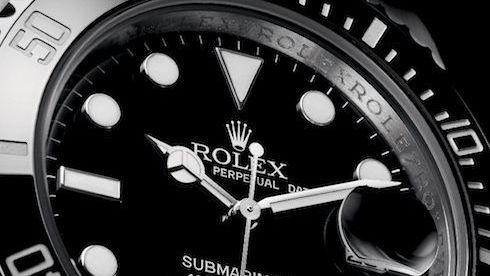

Words: Hamish Roy
Founded in 1905, Rolex was born in a fledgling century – one that was to be an age of progress and new beginnings. In keeping with the spirit of the time, they made several pioneering contributions to watchmaking within their first few decades. In 1926, for example, they released the Oyster, the first waterproof watch case in the world. Then, in 1931, came the Perpetual movement, a revolutionary self-winding mechanism that used an oscillating weight to capture the energy of the wearer’s hand movements. It was in the 1950s, however, that Rolex began to channel their creativity into making watches that fulfilled specific functions. These watches aimed to serve the new and adventurous lifestyles that that had sprung from the modern world, and that required design that went well beyond the ordinary.
A vintage Rolex showcasing their signature Perpetual movement. Image: bobswatches.com
In 1953, the Oyster case and the Perpetual movement came together in a pioneering new project – one that had been set in motion years earlier by René-Paul Jeanneret, a member of the Rolex board and a passionate diver. Jeannette had, for some time, envisioned a diving watch that fulfilled several strict criteria: it must be at once exceptionally robust, pleasing to the eye and comfortable to wear. This idea finally took expression in the Submariner, which, upon its launch in 1953, was the only watch in the world that could boast water resistance to 100 metres.
An original Submariner. Image: rolexforums.com
Early adverts for the watch drew attention to a very real issue affecting deep sea divers: their loss of a sense of time when underwater. Unsurprisingly, this was an issue that could easily prove fatal – or, at the very least, result in a crippling case of the bends (decompression sickness). In order to address this, Rolex incorporated the famous grip-edged rotating bezel, which allows a diver to monitor their immersion time and compression stops. By turning the zero marker to match the minute hand upon descent, divers can accurately count off how long they have been in the water.
The Submariner today
Image: watchology.com
Today, the Submariner sits firmly in the sports watch hall of fame. Its technical prowess and engineering excellence are well documented, but it remains a favourite as much for its elegant looks and pleasing feel. Indeed, if there’s one thing that’s readily apparent with this watch, it’s that it feels as you hoped it would. Solid, weighty and robust, it’s designed to give a lifetime of service – both inside and out. Since 1988, all Submariners have been powered by Rolex’s 3135 movement, a self-winding chronometer developed and manufactured entirely in-house. Swiss-certified, this descendant of the first Perpetual movement is known around the world not only for its precision, but for its hardiness, the latter a product of Rolex’s Panachrom hairspring, which provides 10 times the shock resistance of similar movements.
The Rolex 3135 movement. Image: Rolex
Aesthetically speaking, however, it is plain to see that the Submariner remains much the same as that very first model. The materials, mechanics and details have been refined over the years, but the proportions and lines remain much as they were in 1953. All these years later, it is a watch that continues to pay homage to Jeanerret’s perseverance and vision, a watch that stays true to the man who would accept nothing but true elegance in his diving watch.
For more information, visit www.rolex.com
Main image: bulangandsons.com


